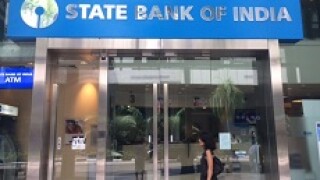State Bank of India SBI
-
Global investors scrambled for paper in India’s largest qualified institutional placement (QIP) this week as State Bank of India raised Rp150bn ($2.3bn) amid strong appetite for the country’s stocks. Its success heralds a bumper year for FIG equity raisings, with more big trades already shaping up, writes John Loh.
-
State Bank of India, which wrapped up a $500m syndication with 21 lenders this week, is already eyeing a new borrowing of about the same size, said bankers.
-
Indian lender IndusInd Bank is planning to roll out a $300m syndication with four mandated lead arrangers and bookrunners next week.
-
ONGC Videsh (OVL), the overseas investment arm of Indian state-owned ONGC, is seeking a dual currency $844m-equivalent loan from the offshore syndication market.
-
Bharat PetroResources (BPRL), the overseas arm of Bharat Petroleum Corp that approached lenders for a $300m loan in April, has chosen two banks to arrange the deal.
-
State Bank of India returned triumphantly to ECM in the country’s largest qualified institutional placement on Tuesday, raising Rp150bn ($2.3bn) even as one investor bid for half of the shares.
-
A $500m three year borrowing for State Bank of India has been allotted among 21 lenders, eight of which joined during general syndication.
-
State Bank of India has hired a six-strong team of foreign and domestic firms to lead its up to Rp150bn ($2.3bn) capital raise, according to a banker on the mandate.
-
Reliance Infrastructure has received the final go ahead from India’s market regulator to list its infrastructure investment fund, putting it on track to be the country’s third InvIT IPO.
-
India’s divestment body has set the pitching schedules for bidders on the IPOs of state-owned Rail Vikas Nigam (RVNL) and Rites, according to announcements on its website.
-
Indian hospital operator Shalby filed a draft red herring prospectus last Friday for a possible Rp7bn ($108m) IPO via three bookrunners.
-
India’s divestment body has revealed the pitch schedules for a series of government sell-downs, each of which is set to include a mix of foreign and domestic firms vying for lead roles.










